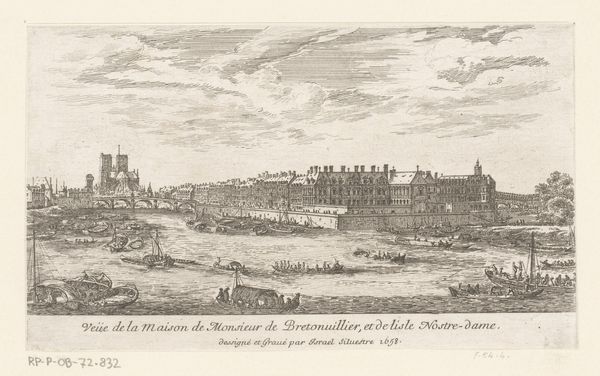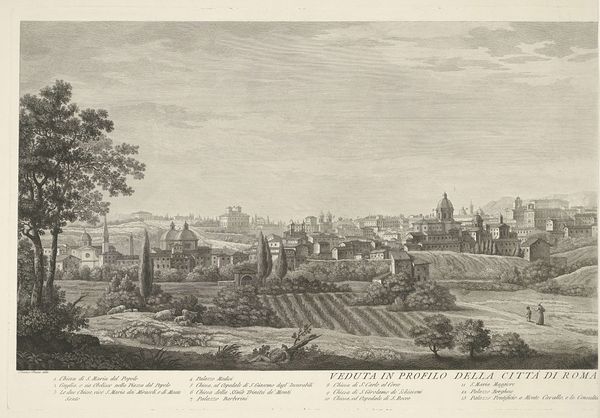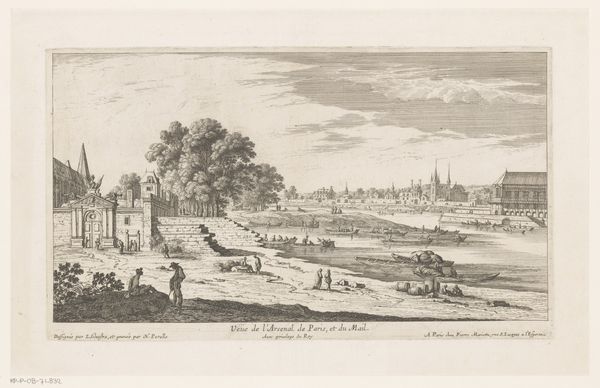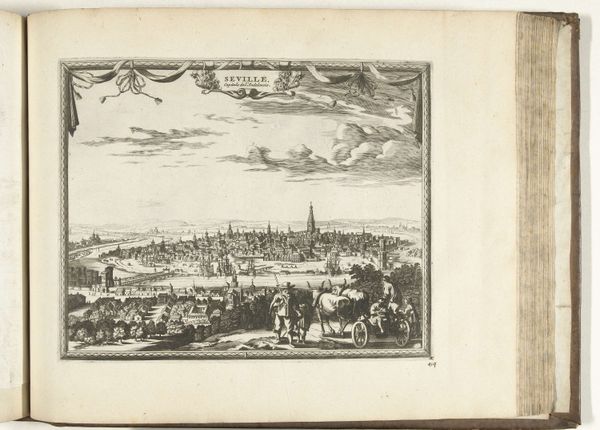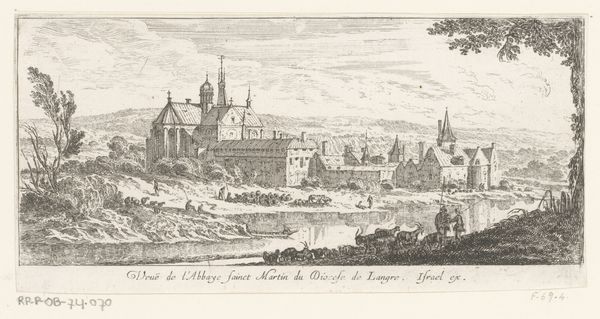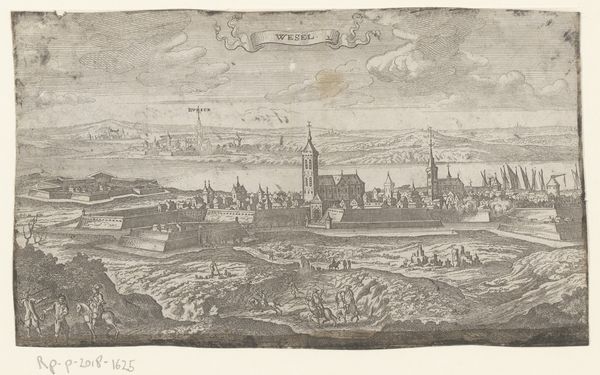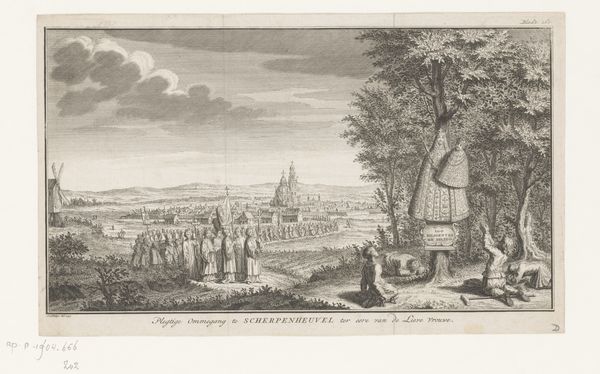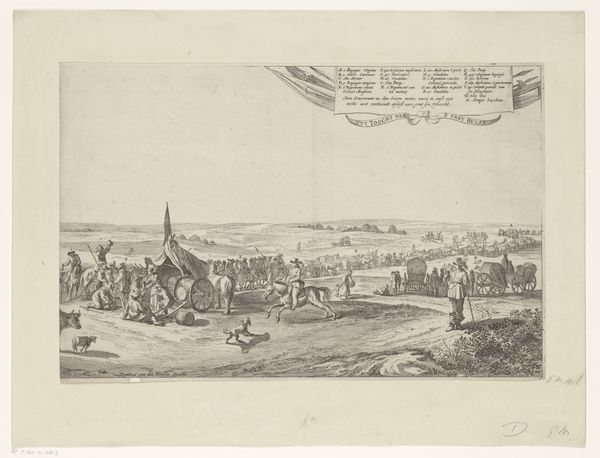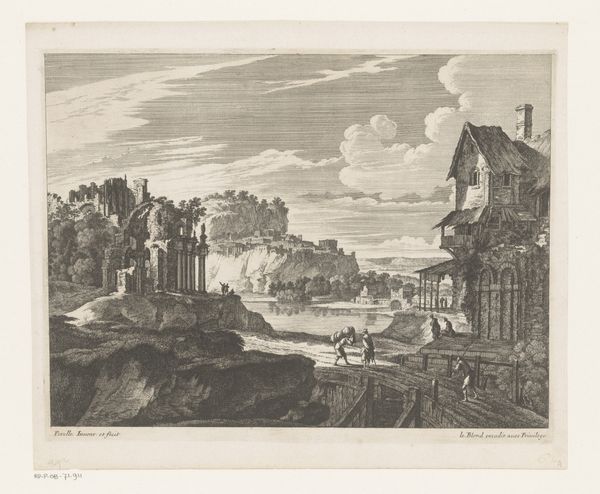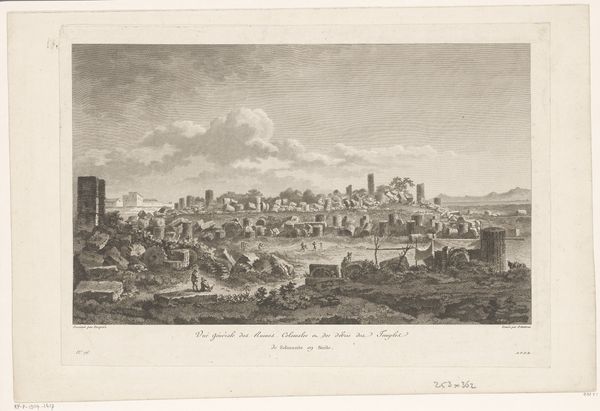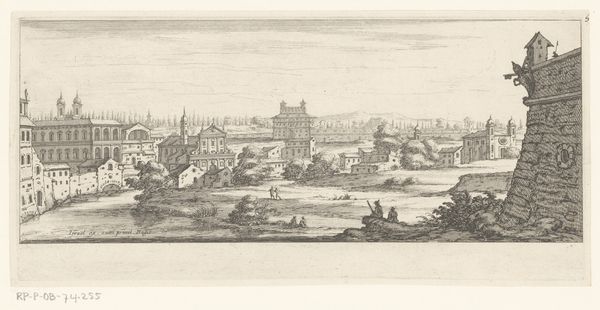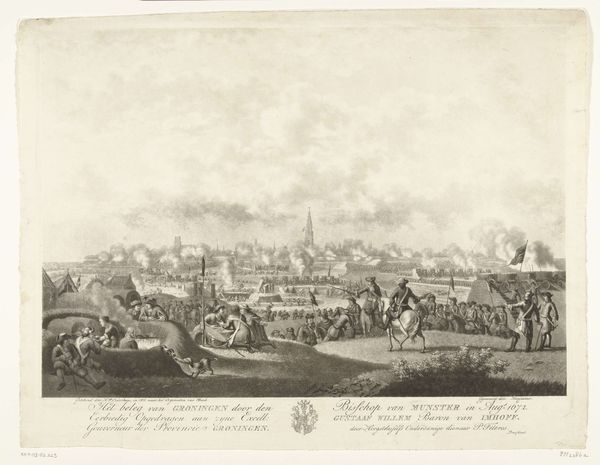
print, engraving
#
neoclacissism
# print
#
landscape
#
19th century
#
cityscape
#
engraving
Dimensions: height 289 mm, width 428 mm
Copyright: Rijks Museum: Open Domain
Editor: Here we have Marie Alexandre Duparc's "Landschap met zicht op Amiens," created sometime between 1765 and 1830. It’s an engraving, and I'm immediately struck by the contrast between the ruins in the foreground and the seemingly peaceful cityscape in the distance. What do you see in this piece? Curator: As a materialist, I am drawn to consider how this image functions as a record of labor and social conditions. The very act of creating an engraving is a process, a deliberate manipulation of materials to reproduce an image. We can explore what types of labour were required for printmaking at that time. Editor: That's interesting! I hadn't really considered the actual making of the engraving. Curator: Think about the materials—the copperplate, the inks, the paper. Where did they come from? How were they produced? And who had access to them? Further, observe the "ruins." Ruins provide a glimpse into labour relations. Is it possible to view "VUE GENERALE DE LA VILLE AMIENS" as a commentary of urban production and extraction? Editor: So, you're suggesting that instead of just seeing this as a pretty landscape, we should think about it as a product of specific industries and social structures of the time. Do you see a relationship with neoclacissism art movement as the metadata describes? Curator: Exactly. By thinking in material terms, we are prompted to examine power dynamics, such as access and availability to create art objects at that time. What classes have representation in neoclacissism art, for whom these were meant? Who benefit economically from neoclassicism-related trades, and other labour behind its production? Editor: I never would have thought of approaching a landscape like this! Looking at the city in the background in terms of materials adds another dimension to how I understand the artwork. Curator: Indeed. Approaching it from a Materialist view transforms the consumption of art to critically examining conditions that led to art’s manufacture, inviting reflections of materiality, labour, and consumption.
Comments
No comments
Be the first to comment and join the conversation on the ultimate creative platform.
